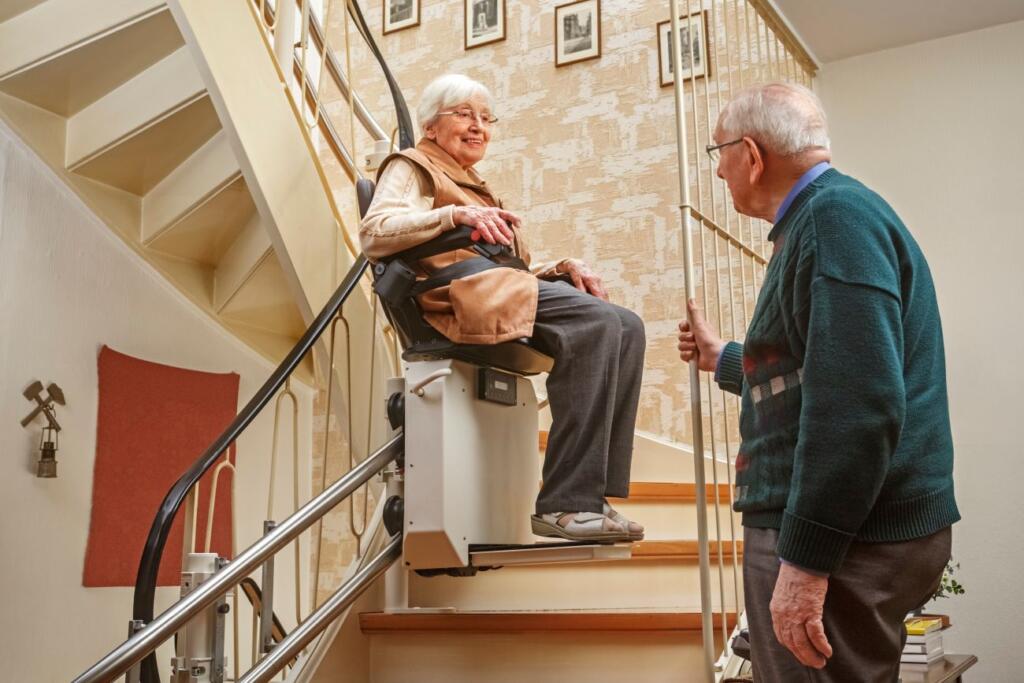As you get older, simple actions and tasks become increasingly difficult. You might even find that it’s challenging to navigate your own home – especially if you live in a home with multiple levels. Older adults can face mobility limitations that make climbing up or down a set of stairs both unstable and incredibly dangerous.
Fortunately, there is a way to safely navigate your home and all of its stairs. A stairlift can help you get up and down staircases of any kind. With a stairlift installed in your home, you can limit your risk of falling.
 Ingo Bartussek / Shutterstock
Ingo Bartussek / ShutterstockIf you’re wondering whether a stairlift might be a good choice for you and your home, here’s a guide that’ll help you decide.
Who Needs a Stairlift?
Stairlifts are designed for individuals who have limited mobility. If you struggle to walk up and down staircases or have a condition that affects your ability to walk such as arthritis, a hip replacement, or reduced strength and flexibility, you might benefit from a stairlift.
A stairlift can help anyone with mobility issues maintain their independence. You’ll be able to continue to access all floors of your home without difficulty. You can climb and descend stairs without struggling, without pain, and without risking your health.
If you’re unsure whether or not a stairlift is the right choice for you, you can discuss your mobility with an occupational therapist (OT). Speak with an OT through the NHS, and they’ll be able to help you determine when it’s the right time to purchase and install a stairlift.1
Types of Stairlifts
When you’re ready to purchase a stairlift, it’s important to know that there are different kinds available. Each stairlift is built for a different type of staircase and different users’ needs.
You can choose from the following common types of stairlifts.
Seated Stairlifts
Seated stairlifts are the most popular type of stairlift.
With this stairlift, you sit on a seat that swivels. The seat then takes you up or down the stairs. When you reach the landing, you stand to exit the stairlift.
Perch Stairlifts
If you’re unable to sit or find sitting uncomfortable, a perch stairlift is a great choice.
A perch stairlift supports you underneath the buttocks, so you don’t have to move your hips or knees. You then stand while supported as the lift carries you up or down the stairs.
Straight Stairlifts
Straight stairlifts are designed solely for straight staircases. They’re installed and fitted to the tread of the stairs instead of the wall above the stairs, which can make them more affordable. They can be powered by the mains or a backup battery.
Curved Stairlifts
Curved stairlifts can carry you around bends in any staircase. They can glide across landings and half-landings. They’re ideal for staircases that aren’t straight. As such, they are custom-made to suit your specific staircase and layout.
Outdoor Stairlifts
Outdoor stairlifts are ideal for outdoor spaces with stairs, such as steps leading to your front or back door. They can withstand the weather and outdoor elements. Also, they often include waterproof covers to protect any electric components.2
The Cost of a Stairlift
Purchasing a stairlift is a big expense. All kinds of stairlifts are expensive, with a basic model costing between £2,000 and £7,000 when purchased brand new.
Fortunately, financing options are available. You can speak with medical professionals, stairlift retailers, and other organisations for information on financing your stairlift purchase.
Second-Hand Stairlifts
However, if you’d like to spend less money on a stairlift, you can purchase second-hand stairlifts. Many manufacturers and suppliers sell reconditioned stairlifts, which are stairlifts that have been repaired and are able to be installed in a new home. These second-hand stairlifts might not include extended warranties, but they are much more affordable.
The average price of a second-hand stairlift is £1,990 – a significant discount compared to a brand-new stairlift.
Financial Assistance
Additionally, you may be able to find financial assistance for the purchase of a stairlift. If you have a chronic illness or disability, organisations may be able to help you find the funds to afford the stairlift you need.
For instance, social services and local health departments may be able to offer grants. You may also be eligible for low-cost loans.
Search for financing in your area to see what kind of help you might be able to receive or apply for.3
How to Find Affordable Stairlifts
If a stairlift can help you more safely and easily navigate the stairs in your home, it’s a smart investment. A stairlift may be able to keep you from falling and injuring yourself. Additionally, it can help those who find it difficult to stay mobile.
Because stairlifts can be expensive, it’s important to shop around. Taking the time to research different stairlifts, retailers, and financial options could help you save money on a stairlift. You should search online, consider different models and types, and find an option that will work for you. Then, you can compare the prices of different stairlifts and look for potential savings.